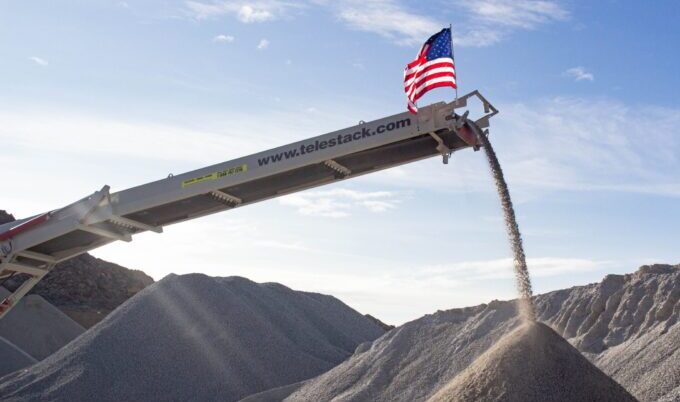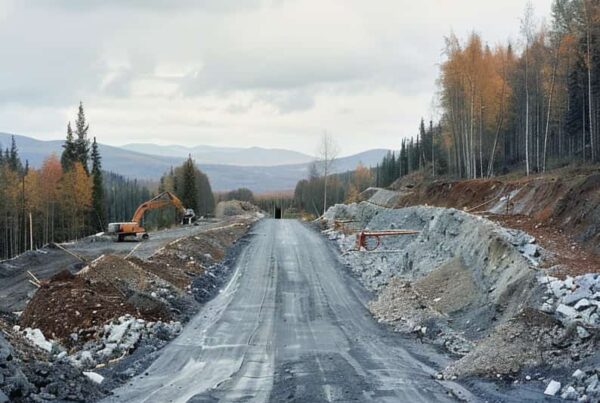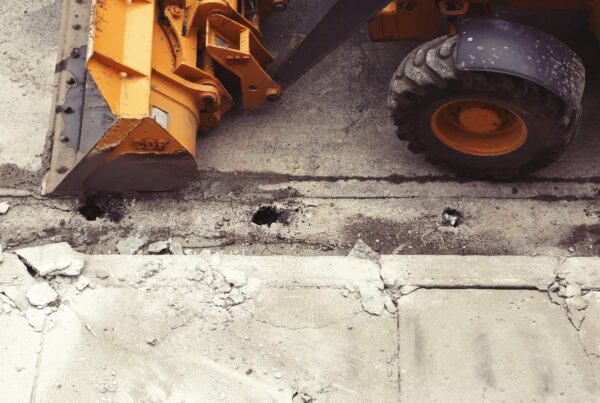Amidst the sprawling Southern California landscape, with its architectural majesty and urban tapestries, there lies an unsung hero: the Class 1 & 2 Crushed Aggregate Base (CAB). Far from the limelight, this material serves as the backbone of our infrastructure. But what is Class 1 & 2 CAB, how is it created, and why is it indispensable to Southern California’s vast array of projects?
In sometimes we miss the forest for the trees. The story of Class 1 & 2 CAB in Southern California, with its granite origin, is emblematic of this oversight, and yet it encapsulates the very essence of foundational strength.
Class 1 & 2 CAB Origin
Granite, often admired for its majestic presence in the form of mountain ranges, undergoes a transformation in the quarries of Southern California. Here, immense rock formations are methodically extracted and processed. In 2020 alone, the state produced an astonishing 75 million tons of granite CAB, underscoring the scale of this endeavor.
Class 1 & 2 CAB are born from this granite. Through a series of crushing and grading processes, the formidable granite is transformed into a versatile base material. But why two classes? Each class caters to specific engineering standards and requirements – a testament to the meticulous planning underpinning our infrastructure.
Crafting the Base: From Granite Quarry to CAB
The journey of Class 1 & 2 CAB begins in the granite quarries of Southern California. Granite, renowned for its unparalleled strength, is extracted in large blocks from the earth. Through a meticulous crushing process, these formidable rocks are transformed:
- Primary Crushing: The first stage sees the granite blocks broken down into more manageable pieces.
- Secondary and Tertiary Crushing: Precision is key. Here, the material is further refined to specific sizes suitable for different construction demands.
- Screening: To achieve the correct size distribution, the crushed granite is sorted. Each particle size has its role to play in compaction and stability.
- Quality Control: Rigorous testing ensures the final product meets engineering and safety standards, making it ready for use.
The Distinct Roles of Class 1 & 2 CAB
Why two classes? Each serves a unique purpose:
- Class 1 CAB: Optimized for maximum stability, it’s the preferred choice for heavy-duty applications like major roadways and airport runways.
- Class 2 CAB: While still offering excellent stability, it’s a bit more versatile and can be used in a broader range of projects, from residential pathways to parking lots.
The Invisible Backbone
The application of Class 1 & 2 CAB is as varied as the landscape of Southern California itself. From the scenic coastal roads of Malibu to the bustling streets of downtown Los Angeles, this aggregate base plays a pivotal role.
- Highways & Roads: A staggering 92% of California’s road projects utilize granite CAB. This choice is not accidental. Granite’s natural durability ensures these roads can withstand the test of time and the weight of millions of vehicles.
- Airports: If you’ve ever landed at LAX or San Diego International Airport, you’ve touched down on runways supported by CAB. It provides the stability needed for these massive concrete structures, ensuring safe landings and takeoffs.
- Rail Networks: Southern California’s growing rail network, with over 500 miles of tracks, relies heavily on this crushed aggregate base to stabilize the rail bed.
- Construction Foundations: Beyond transportation, the base is crucial in commercial and residential projects, ensuring structures have a steady footing.
The need for Class 1 & 2 CAB in Southern California cannot be overstated:
- Structural Integrity: For building roads, highways, or any paved surface, CAB provides a stable foundation. It distributes loads, preventing rutting and premature wear.
- Cost-Efficiency: Utilizing locally sourced granite CAB is not only environmentally sound but also cost-effective. Reduced transportation costs translate to budget savings in massive infrastructural projects.
- Drainage: Properly graded CAB facilitates drainage, crucial in flood prevention, especially in areas prone to heavy rains or flash floods.
- Versatility: From supporting rail networks to acting as a bed for pipelines, its applications are diverse.
Beyond the Numbers
While often overlooked, Class 1 & 2 CAB’s role in shaping Southern California’s infrastructure is irrefutable. Every road we traverse, every building we enter, owes a debt to this granite-derived material. As we continue to build and expand, the silent contribution of CAB remains a testament to the importance of strong foundations and the intricate processes that create them.
Get Class 1 & 2 CAB Today
Don’t underestimate the power of a strong foundation for your construction projects. Choose Lynx Cat Mountain Quarry for the highest quality Class 1 & 2 Crushed Aggregate Base (CAB). We specialize in offering durable, cost-effective, and versatile solutions for Southern California’s growing needs. Contact us today and build on a base you can trust.




